Savory Philly Cheesesteak Tortellini Recipe: A Cozy Twist
Comfort meets culinary creativity in this mouthwatering philly cheesesteak tortellini that blends classic sandwich flavors with pasta perfection.
Tender beef strips dance with melted cheese, nestled among soft tortellini pillows of deliciousness.
The sizzling combination brings together the best of two beloved dishes in one spectacular meal.
Caramelized onions and bell peppers add depth and richness to every single bite.
Philadelphia’s iconic sandwich transforms into a hearty pasta experience that will leave you craving more.
Each forkful promises a delightful explosion of savory goodness that satisfies even the most discerning taste buds.
Prepare to fall in love with this unexpected and irresistible twist on traditional comfort food.
Reasons to Love a Quick Steak & Pasta Skillet
Steak and Pasta Skillet Shopping List
Main Protein:Vegetables:Pasta and Dairy:Seasonings:Fast Steps for Steak Pasta Skillet
Step 1: Slice and Prep Ingredients
Start by cutting the steak into thin, delicate strips that will cook quickly and evenly.
Chop your colorful bell peppers and onions into bite-sized pieces that will add amazing flavor and texture to the dish.
Have all your ingredients ready on a cutting board for smooth cooking.
Step 2: Sizzle the Steak and Vegetables
Heat a large skillet over medium-high heat and add a touch of olive oil.
Toss in the steak strips and begin to brown them.
Quickly add the peppers and onions, sprinkling with salt, black pepper, and your favorite dried herbs like oregano or thyme.
Stir and cook until the steak is perfectly golden and the vegetables are slightly softened.
Step 3: Create the Creamy Pasta Base
Drop the tortellini directly into the skillet with the cooked steak and vegetables.
Pour in the half and half, which will create a luxurious sauce.
Bring the mixture to a boil, then reduce heat and cover.
Let everything simmer gently for about 10 minutes, allowing the pasta to cook and absorb all the delicious flavors.
Step 4: Melt and Serve
Sprinkle provolone cheese generously over the top of the skillet.
Cover and let the cheese melt completely, creating a gooey, irresistible topping.
Once the cheese is melted and bubbly, remove from heat and serve immediately.
The result is a one-pan meal that’s creamy, savory, and totally satisfying.
Steak Skillet Pro Cooking Tips
Unique Steak & Pasta Skillet Styles
Steak Pasta Skillet Serving Suggestions
Storage Advice for Steak & Pasta Leftovers
FAQs
Sirloin or flank steak are ideal because they’re lean, tender, and slice easily for quick cooking.
Yes, choose cheese-filled pasta like ravioli or even penne as good alternatives that will work well with the creamy sauce.
Slice against the grain and avoid overcooking. Quick high-heat sautéing keeps the meat tender and juicy.
The recipe is mild, but you can add red pepper flakes or cayenne if you want extra heat during the seasoning step.
Print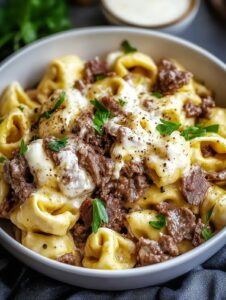
Philly Cheesesteak Tortellini Recipe
- Total Time: 30 minutes
- Yield: 4 1x
Description
Creamy Philly cheesesteak tortellini blends classic sandwich flavors with Italian pasta comfort. Hearty cheese, tender beef, and perfect seasonings create a quick weeknight dinner that satisfies deep cravings and delights hungry families.
Ingredients
Meat and Protein:
- 4 slices Philly sirloin steak
- 19 ounces (540 grams) refrigerated cheese tortellini
Vegetables and Seasonings:
- 1 green bell pepper, thinly sliced
- 1/2 yellow onion, finely diced
- 2 teaspoons steak seasoning
Dairy and Oil:
- 1 teaspoon olive oil
- 1 pint (473 milliliters) half and half
- 1 cup (240 milliliters) shredded provolone cheese
Instructions
- Slice steak into delicate, uniform strips and chop vegetables into bite-sized pieces for even cooking and presentation.
- Heat skillet over medium-high heat and sear steak strips with bell peppers and onions, seasoning generously. Cook until meat reaches desired doneness and vegetables soften, approximately 5-7 minutes.
- Introduce tortellini to the skillet, pouring half and half over the ingredients. Bring mixture to a robust boil, then reduce heat and simmer covered for 10 minutes, allowing pasta to absorb flavors and become tender.
- Carefully layer provolone cheese across the skillet’s surface, covering with lid to encourage melting. Let cheese transform into a creamy, golden blanket over the dish, about 2-3 minutes.
- Remove from heat and let the skillet rest for 2 minutes, allowing sauce to thicken and ingredients to integrate. Serve immediately while cheese remains gooey and ingredients are steaming hot.
Notes
- Slice steak against the grain for maximum tenderness and easier chewing.
- Use high heat when sautéing steak to create a beautiful golden-brown exterior while keeping the inside juicy.
- Choose fresh tortellini from the refrigerated section for superior flavor and texture compared to dried versions.
- Swap half and half with Greek yogurt or light cream to reduce calories without sacrificing creamy richness.
- Prep Time: 10 minutes
- Cook Time: 20 minutes
- Category: Lunch, Dinner, Appetizer
- Method: Sautéing
- Cuisine: American
Nutrition
- Serving Size: 4
- Calories: 600
- Sugar: 3 g
- Sodium: 800 mg
- Fat: 30 g
- Saturated Fat: 15 g
- Unsaturated Fat: 10 g
- Trans Fat: 0 g
- Carbohydrates: 60 g
- Fiber: 2 g
- Protein: 25 g
- Cholesterol: 90 mg

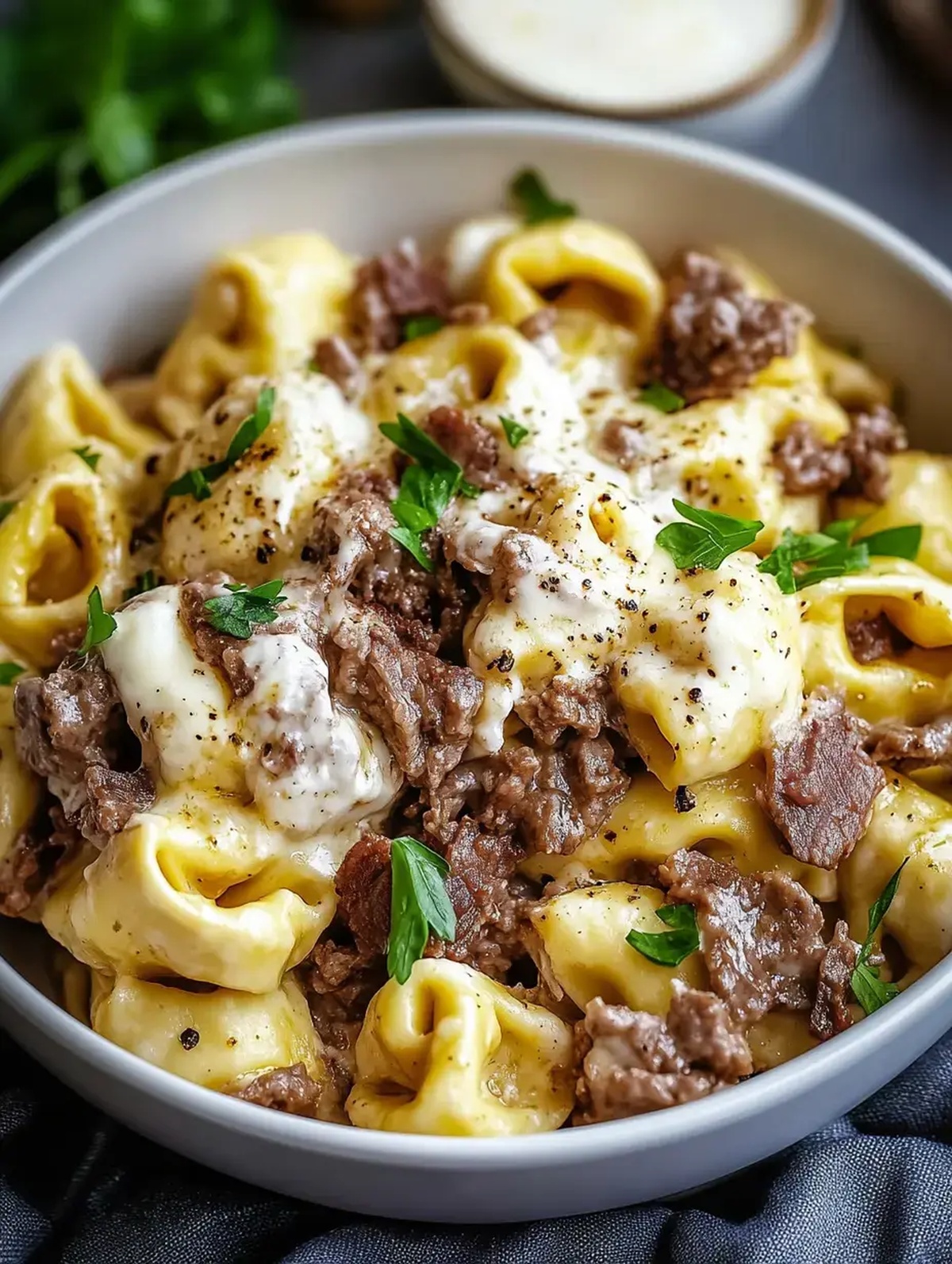
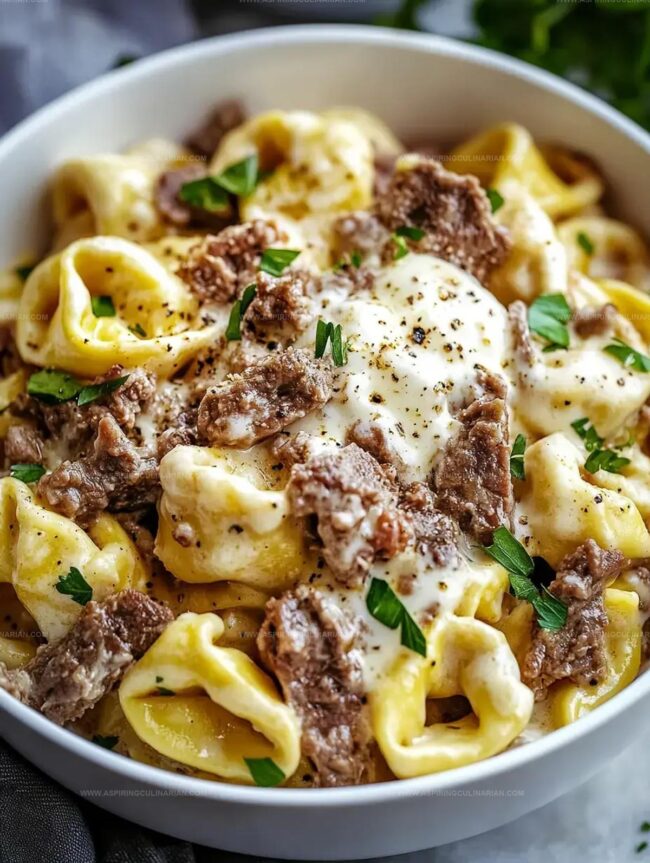
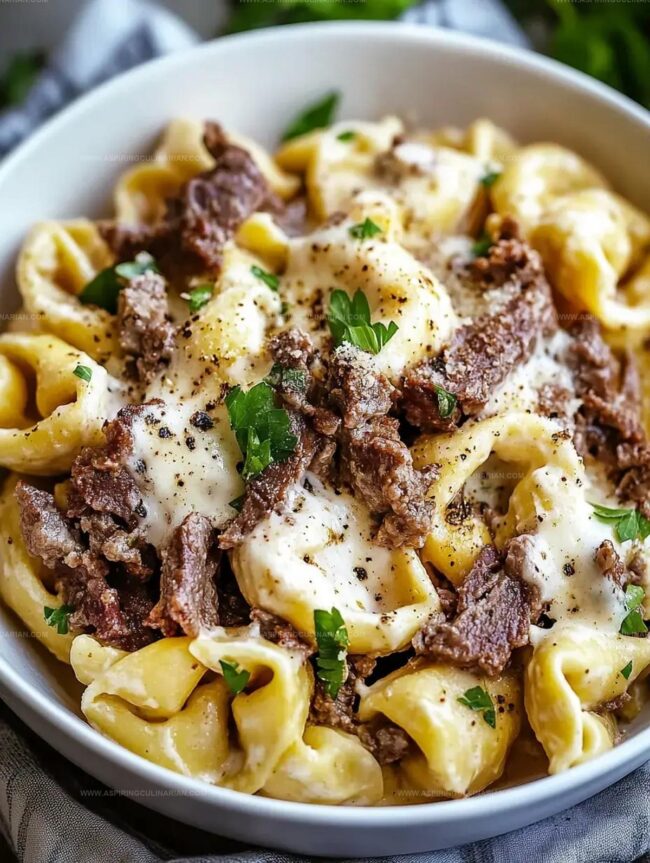
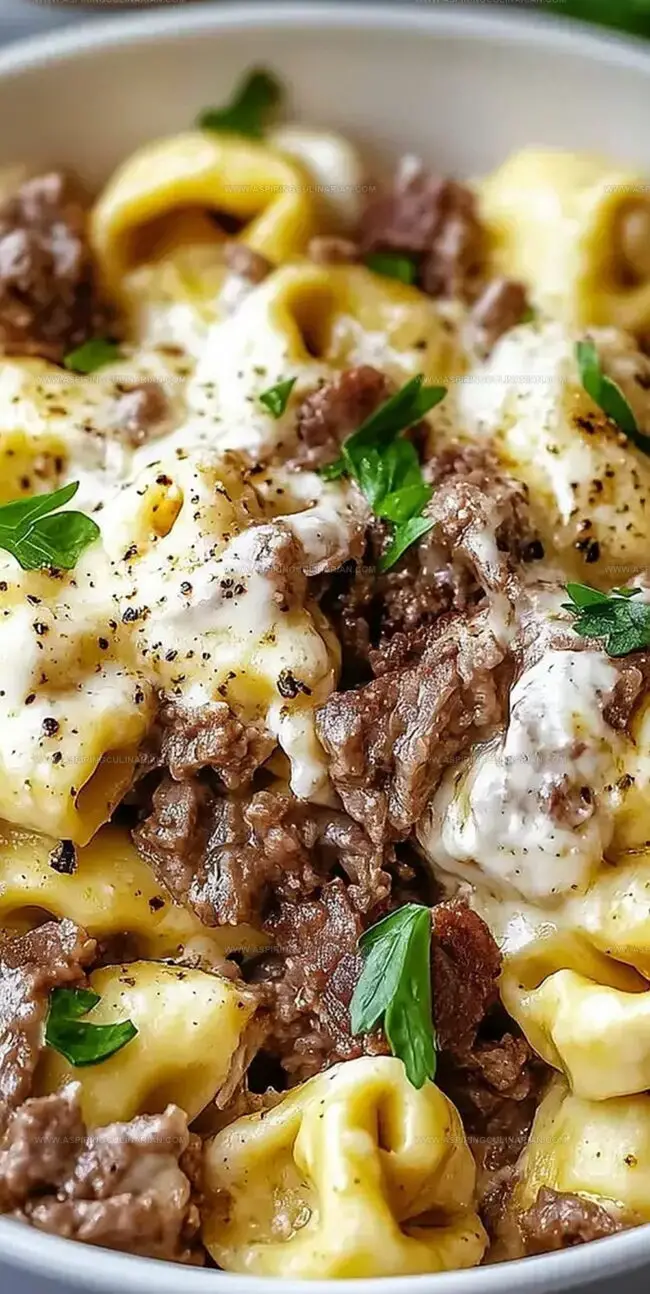
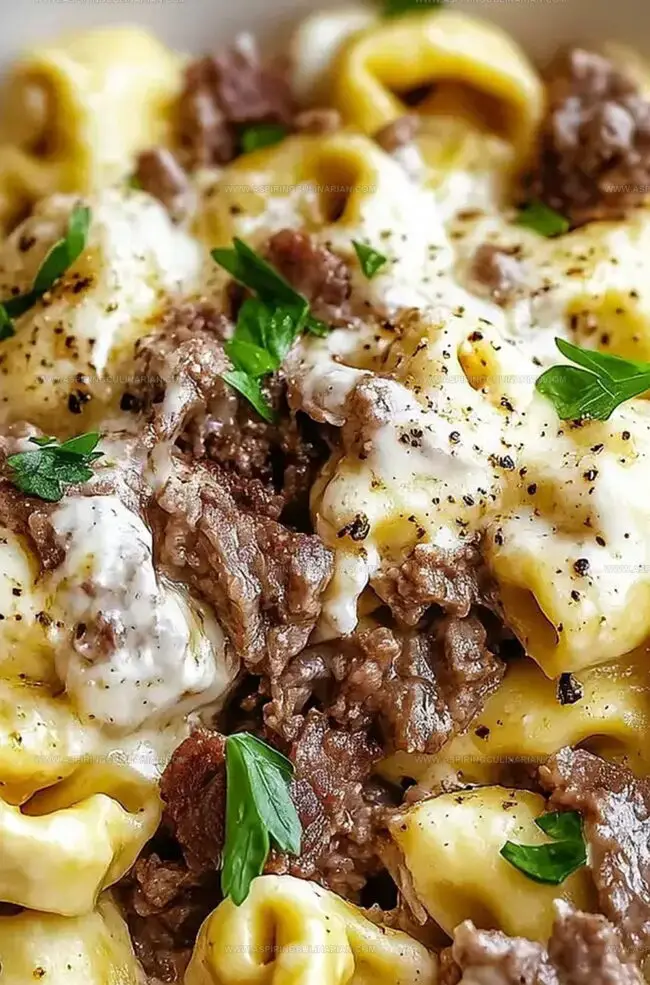
Nathaniel Brooks
Founder & Recipe Developer
Expertise
Farm-to-table cuisine, Seasonal recipe development, Culinary storytelling
Education
Ivy Tech Community College – Indianapolis, IN
Culinary Arts / Hospitality Administration & Events
Focused on hands-on training in classical and modern culinary techniques.
Nathaniel’s story starts in the foothills of the Appalachian Mountains, where farm stands, backyard gardens, and old family recipes shaped his love for real food. After graduating from Ivy Tech Community College in Indianapolis, he spent years working in farm-to-table kitchens, learning how to turn local, seasonal ingredients into something memorable.
Today, Nathaniel pours that same spirit into every single recipe on Aspiring Culinarian – recipes that feel real, comforting, and connected to the land. When he’s not in the kitchen, you’ll find him foraging wild herbs, chasing sunsets with his camera, or writing about the flavors that shaped his roots.